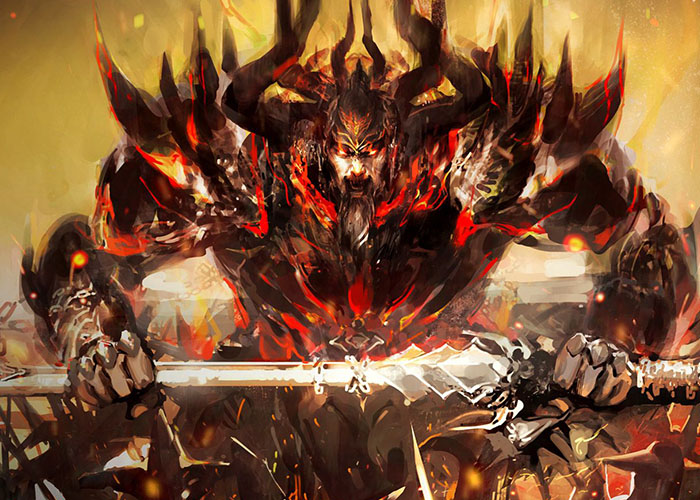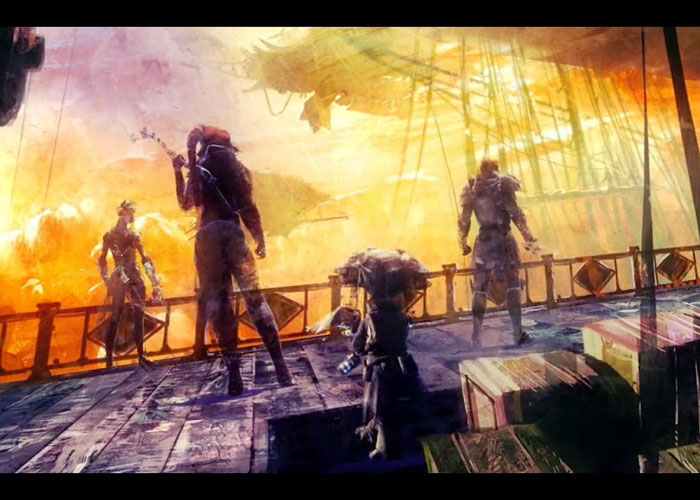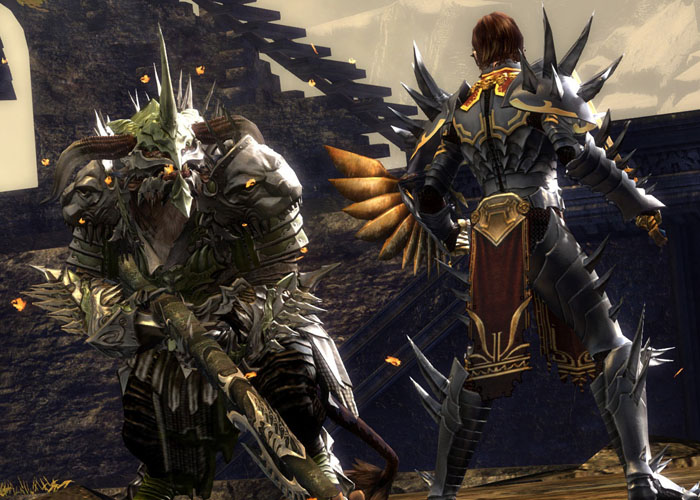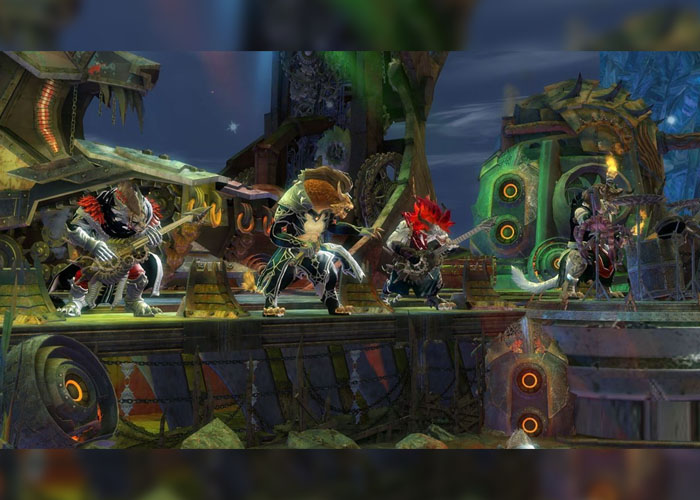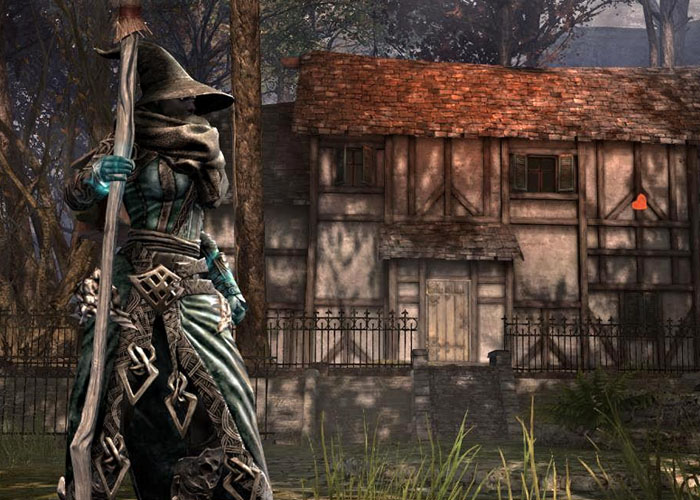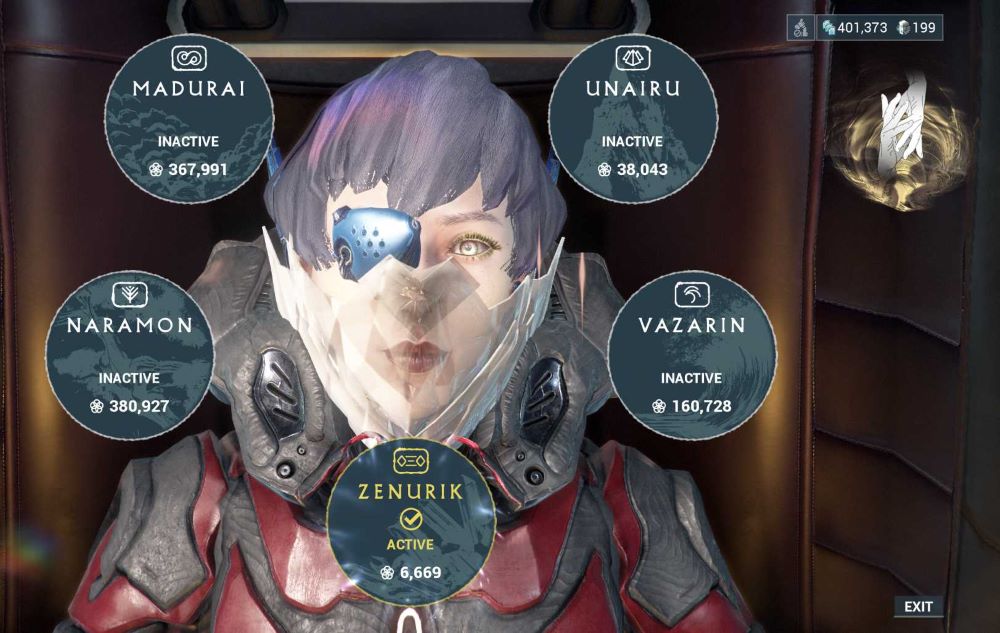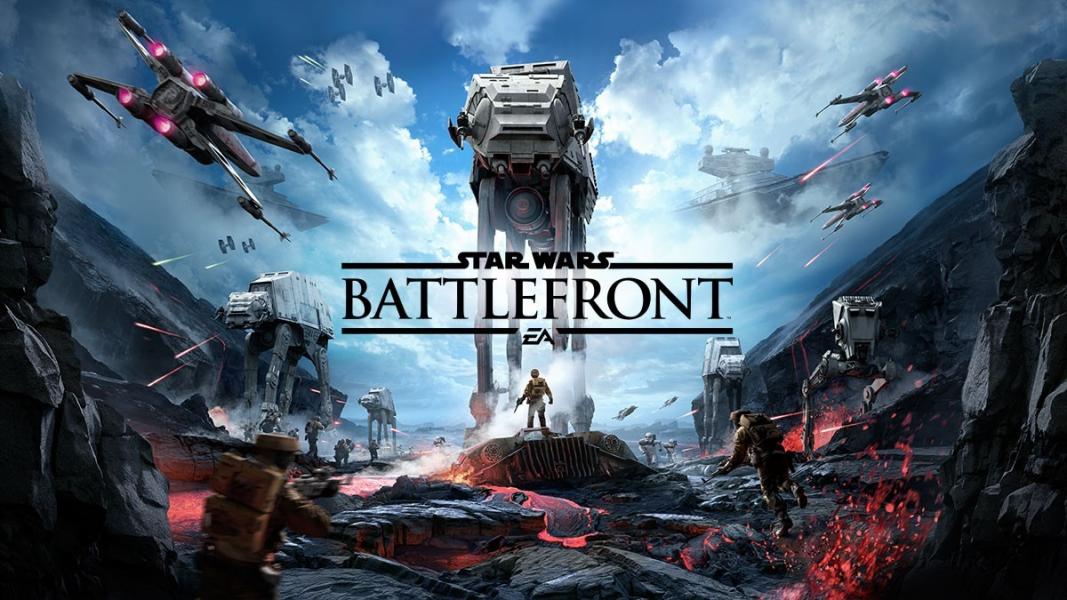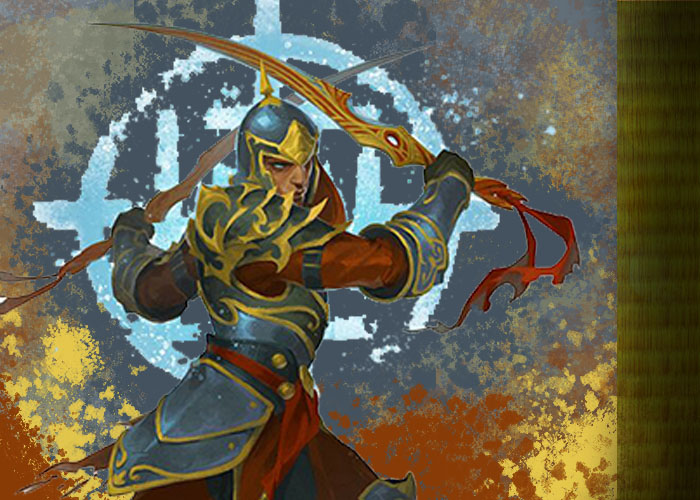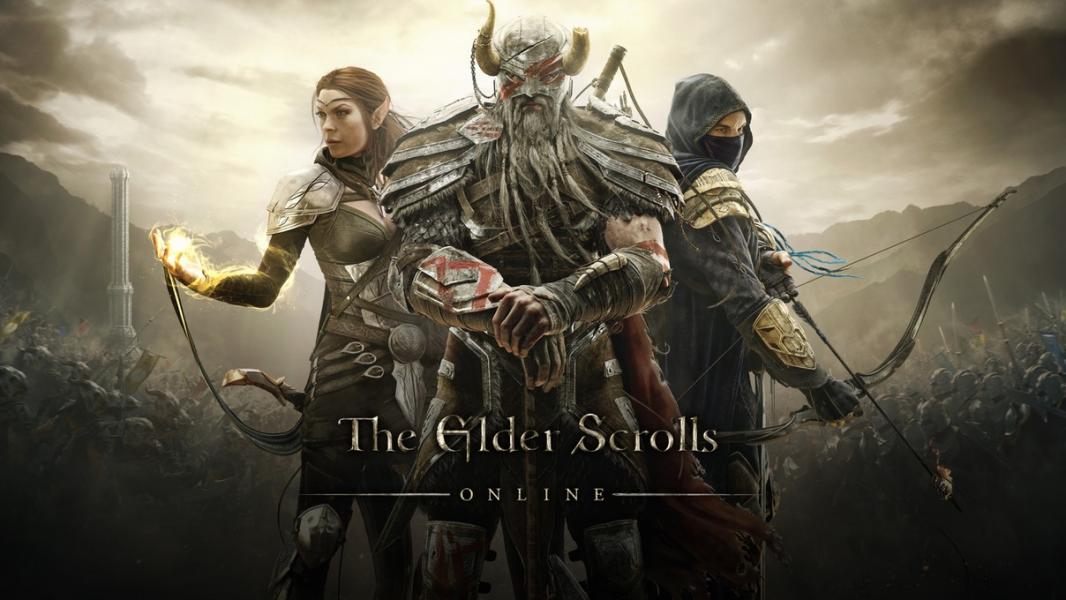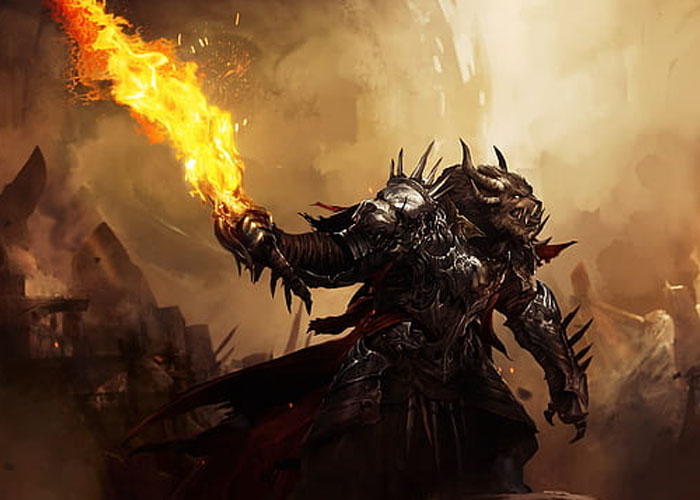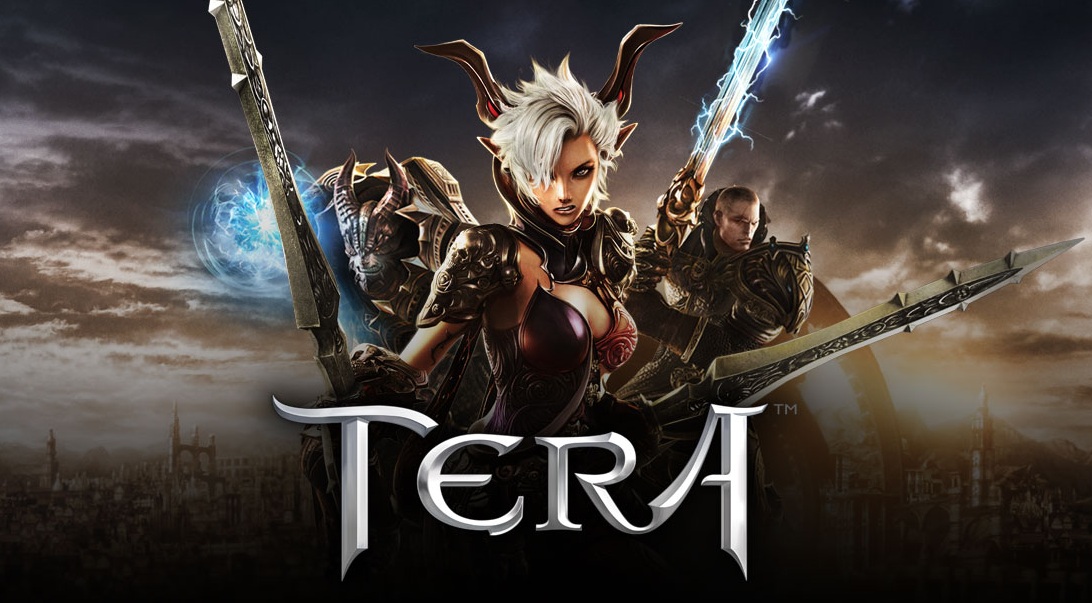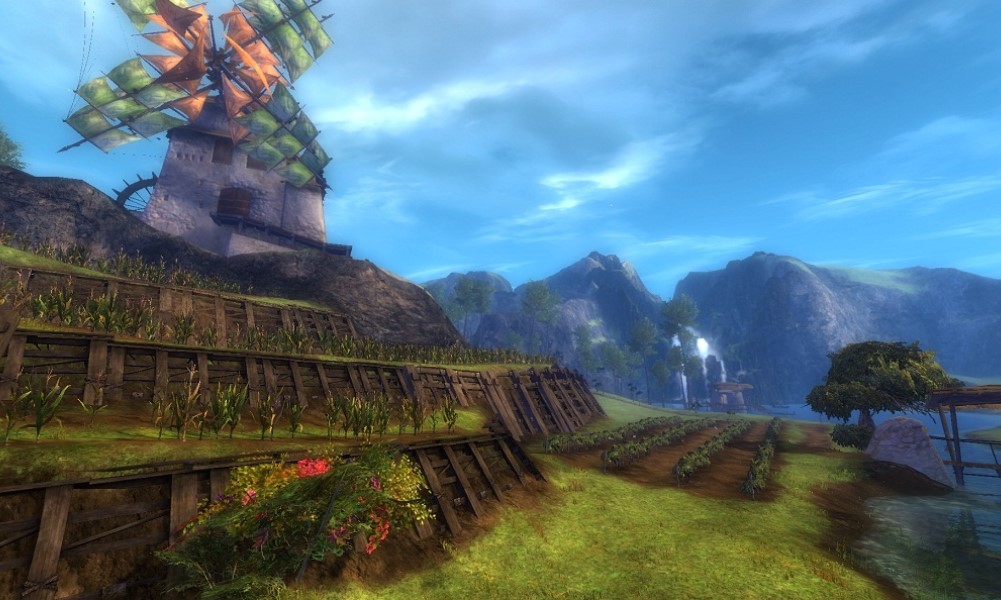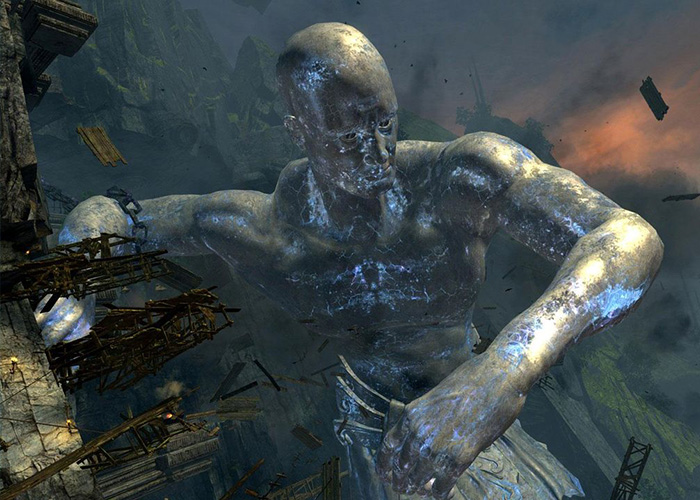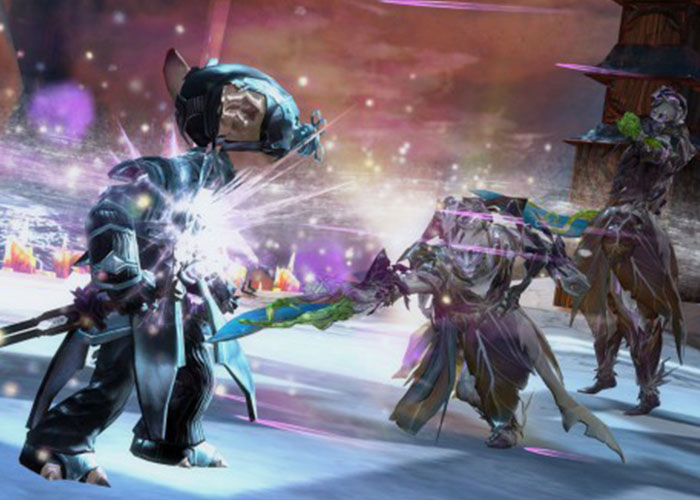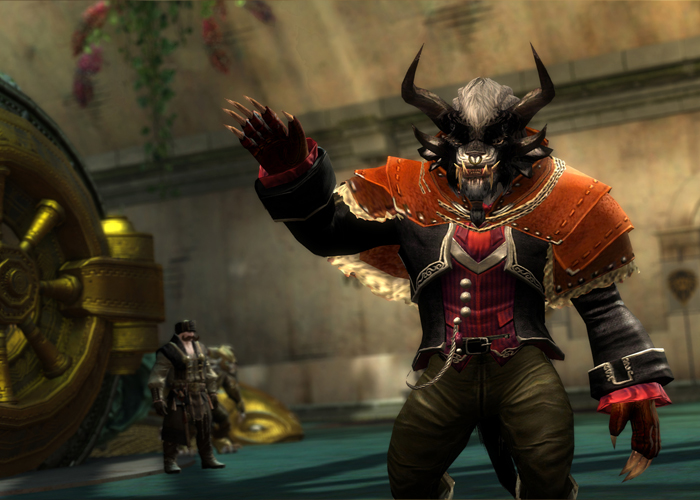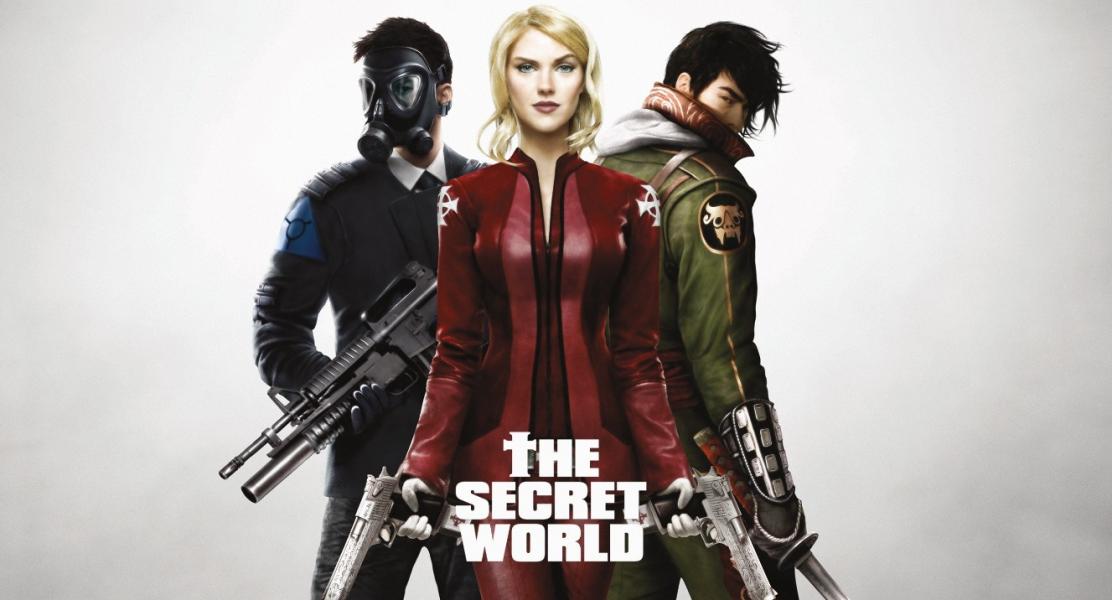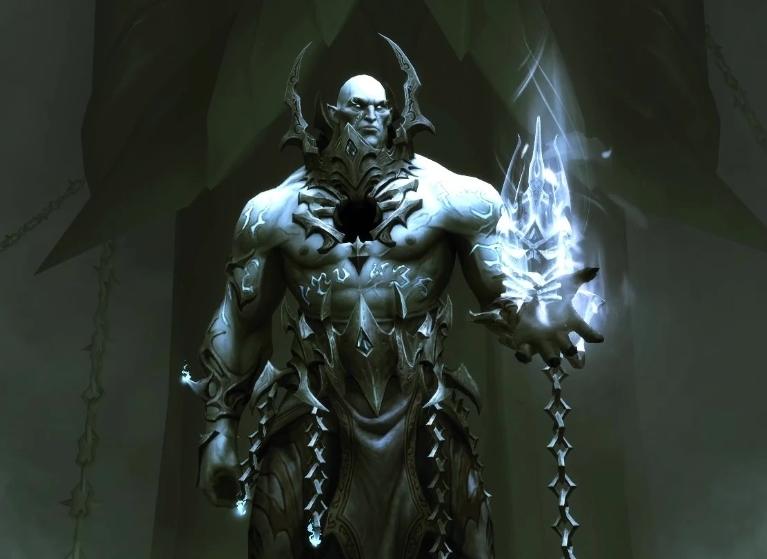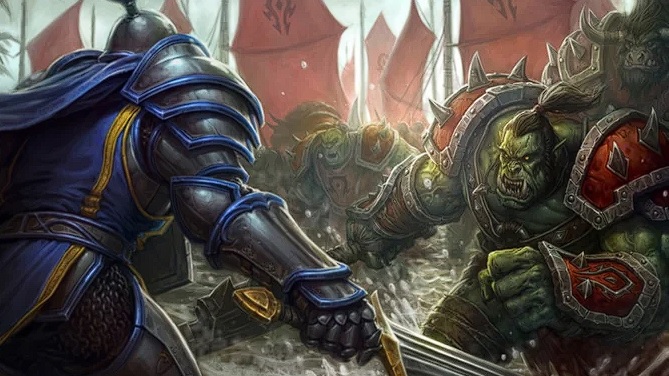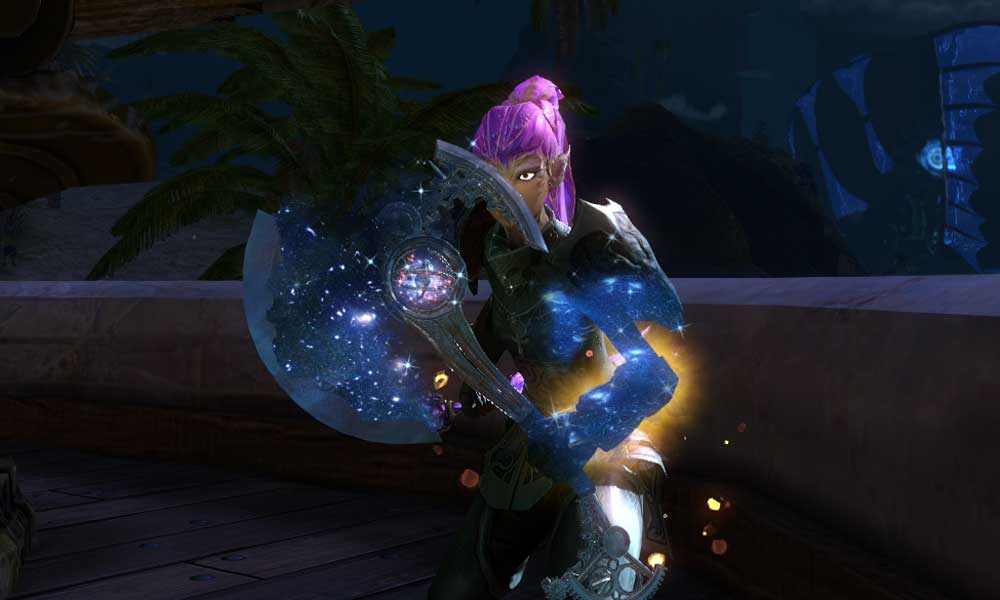
With the recent release of the first batch of the Janthir Wilds expansion, Guild Wars 2 is now well into its fifth expansion. It can be intimidating for new players to approach the game with so much content to consider, especially if they’re deciding which expansions to purchase on a tight budget.
In this article, we will review all five of the game’s main expansions—including each release’s story, open-world content, and instanced encounters—and rate each on their merits.
- Guild Wars 2: Heart of Thorns (2015)
- Guild Wars 2: Path of Fire (2017)
- Guild Wars 2: End of Dragons (2022)
- Guild Wars 2: Secrets of the Obscure (2023)
- Guild Wars 2: Janthir Wilds (2024)
Also note that this article will, of course, contain light spoilers for each expansion’s story. We’ll try to limit it to general summaries and avoid spoiling any major twists.
Without further ado, let’s start with the game’s first major expansion.
Heart of Thorns (2015)

Being Guild Wars 2’s first major expansion and coming off the heels of two living world seasons building up its main antagonist, Heart of Thorns had a lot to prove—but prove it did. Its story is solid; its open-world is stellar, with some of its maps and metas continuing to be among the most-played even today; and its instanced encounters magnificently outshine the dungeons of before.
Heart of Thorns Review
HoT’s story is solid throughout, maintaining a heavy focus on its main throughline. It kicks off following the cliffhanger ending of Living World Season 2: the Pact fleet has been utterly decimated by Mordremoth, Elder Dragon of Plant and Mind. It’s up to the Commander (that’s you!) and company to voyage into the Heart of Maguuma, rally the survivors, and make some new allies among the jungle’s residents in order to save their friends and take down the Elder Dragon for good.
The open-world of HoT is also of incredibly high quality. The maps feature incredible verticality designed to work with the new gliding masteries. Many players will enjoy the challenge posed by exploration itself; those who don’t can ease the difficulty thanks to the later addition of mounts.
The meta-events found in each map have also withstood the test of time, even in the face of extreme power creep. The maps utilize a unique new mechanic called outposts—areas around which mini meta-events occur where players can earn map currency and keys by completing events to assist local denizens or survivors, which they can later use to open chests or caches after completing the larger, main meta event. Said larger metas continue to be some of the most-ran events in the game even to this day.
Finally, HoT features some stellar instanced content: the first four raid wings. While these were actually released during the run of Living World Season 3, all players who own HoT have full access to them. The raids tell their own continuous side story that acts as a transition from HoT to LW3, and the fights themselves are of incredible quality. There are a few stinkers (looking at you, Bandit Trio), but overall, the raids are a great time.
Heart of Thorns The good:
- A tense, focused story rife with drama and atmosphere.
- Unique and immersive interactions based on your character’s race. To avoid spoilers, we won’t explain further.
- Interesting maps featuring verticality.
- The new gliding masteries and more, which the maps and story utilize in a fashion reminiscent of metroidvanias.
- A great gameplay loop between exploration & outposts metas and the larger, “main” map metas.
- Amazing meta-events that have stood the test of time.
- Wonderfully-designed raids that tell their own story.
Heart of Thorns The bad:
- The story, open-world, and raids all pose huge jumps in difficulty compared to Core Tyria, which will hit even harder for players who skip Living World Season 1.
- As the game is generally bad at teaching players how to optimize their builds and gameplay, many will be blindsided by the jump in difficulty.
- The story builds directly off of the events of Living World Season 2, which must be purchased separately; most players will be missing context.
- While the meta-events have generally withstood the test of time, the final boss of the fourth map’s meta is a particularly bad example of power creep trivializing some content.
- Bandit Trio.
Our rating: 8.5/10.
Path of Fire (2017)

Guild Wars 2’s second major expansion came at a tumultuous point in the game’s history, promising to revitalize the game through the addition of a long-requested feature: mounts. With new maps designed perfectly to cater to what is widely considered one of the best mount systems in the genre, a decent story, and three new raids on the horizon, PoF has plenty to offer. Does it deliver on its promises?
Review
PoF features a similarly tight-knit story to HoT, filled to the brim with some of the biggest twists and lore drops to date. In terms of quality, it certainly remains on-par with HoT’s heights, though there are a few issues. This is, unfortunately, where we began to truly see the game’s trend of introducing new story characters only to kill them off immediately; it also features some especially long-winded story steps, another trend that would become more prominent going forward.
The story itself follows the Commander and co. venturing into the desert lands of Elona in order to track down and defeat Balthazar, the rogue god of war. Similar to HoT, they must make new allies and take a few detours to face new enemies along their quest.
The main selling point of the expansion is the introduction of mounts, once again using the mastery system. We previously compared the use of masteries in HoT to metroidvanias, but here is where those similarities are most apparent. As almost goes without saying nowadays, Guild Wars 2’s mounts are spectacularly designed, each filling different roles and feeling wonderful to control. The maps themselves are also a joy to explore for the first time, though their larger and more open nature and the focus on mount progression makes them less enticing on repeat runs.
When it comes to meta-events, PoF’s selection is solid, but most of the metas are shorter and on a much smaller scale than those found in HoT. That in itself isn’t a bad thing, but it has led the PoF metas to be hit particularly hard by modern power creep—just the other day, I personally managed to run ‘Forged with Fire’ with a ragtag squad of 3 players. Two of the maps also suffer from a fundamental issue: The Desolation and the Domain of Vabbi each have two meta-events, but the main reward for completing them—the daily Hero’s Choice Chest—can only be obtained once per map per day. This means that, in both cases, the harder/longer of the map’s two metas almost never gets ran. ‘Serpent’s Ire’ is hit particularly hard by this issue due to being by far the longest and hardest of the PoF metas while being paired with one of the shortest and easiest.
Finally, when it comes to instanced content, players who own PoF gain access to three additional raid wings: wings 5, 6, and 7. Unlike the HoT wings, which tied into the main story, the three PoF wings are completely distinct side stories; wing 5 tells a story of its own, while wings 6 & 7 tell a continuous story across two wings. As for the encounters found within, they are all of incredibly high quality, featuring some of the hardest and most complex encounters in the game (though they’ve recently been usurped by strikes).
The good:
- A gripping story filled with plot twists.
- The best mounts in the MMORPG genre, paired with maps designed specifically around their capabilities.
- A large selection of new map metas.
- Three more incredible raid wings.
The bad:
- Similar to HoT, its story builds directly off of the living world seasons that preceded it (LW3), meaning most players will be missing context unless they purchase it separately.
- Meta-events suffer particularly hard from power creep, and some are rarely ran due to fundamental design issues.
- A few sections of the story are particularly long-winded.
- Though the maps made for a great experience exploring for the first time, they become more of a slog on subsequent runs.
Our rating: 7/10.
End of Dragons (2022)
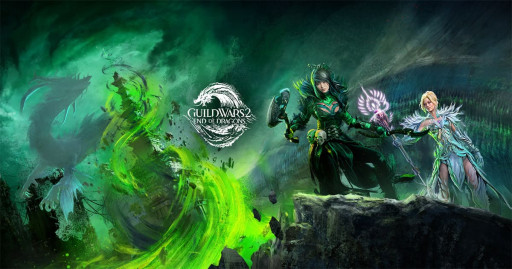
EoD is by far the most removed from any previous expansions, being separated from PoF by two living world seasons (Living World Season 4 and The Icebrood Saga). It’s also the capstone to what the developers have come to call the “Dragon Saga”, encapsulating all of the game’s story up to this point. Between capping off the Elder Dragon plotline and showing off the long-awaited region of Cantha, EoD had a lot of big expectations to live up to.
Review
EoD kicks off by pitting the Commander against the thought-defeated Aehterblades, now returned with a vengeance. A mishap leaves them stranded in Cantha, where they become entangled in Canthan politics and end up facing down the ultimate culmination of the Elder Dragon threat.
EoD’s story is by far the least focused of the major expansions. Your focus is split between dealing with the returned Aetherblades, fighting new Canthan foes such as the Speakers, Jade Brotherhood, and Ministry of Purity, investigating an outbreak in New Kaineng’s new jade power supply, establishing political ties with Cantha, and, you know, capping off the Dragon Cycle storyline and saving the world. With so much going on, some plot points unfortunately receive much less depth than they really deserve, though the developers did a shockingly good job at tying everything together cohesively nevertheless.
EoD’s meta-events take you across large swathes of the map. Their scope is huge, and as such they also suffer from being a bit long-winded. They all manage to stand out as unique, however, and they feature some of the game’s best world bosses in terms of fight mechanics. The maps themselves are also beautiful, vibrant, and varied, and a set of side-story achievements spread across the maps fill many of the gaps left by the main story.
The maps are not without flaw, however. Some might argue they’re too big for their own good, with New Kaineng in particular being frequently criticized for feeling “empty”. There are also some core aspects of the maps, such as minidungeons and mastery points, that suffer from critical bugs.
Perhaps where EoD shines the most is its instanced content. Rather than raids, EoD utilizes the strike system introduced in The Icebrood Saga. EoD came with four strikes (plus a later fifth from LW1, which is categorized as part of EoD). These encounters are some of the best in the game while being much more accessible to new players than raids. High end players needn’t worry about a lack of difficulty, however; the strikes each feature ‘Challenge Modes’ that significantly revamp the fights and make them much harder. The CM of ‘Harvest Temple’, the hardest of these strikes, was only recently usurped as the hardest fight in the game.
EoD gained a sixth new piece of instanced content with the release of the new Silent Surf fractal alongside the Gyala Delve map and story—all of which earned a mixed reception. The fractal comes with a unique puzzle and a new boss, including a Challenge Mode for experienced players. However, the encounter itself not only suffers from some critical bugs, but very heavily favors certain builds over others—if you happen to main a power melee class, you might just get kicked out of groups doing Silent Surf.
The good:
- An interesting and highly varied story.
- Large, beautiful, and vibrant open-world maps.
- Incredible world bosses and story encounters.
- Five incredibly high-quality strikes and their associated CMs.
- A mix of easy, digestible encounters for new players and intensely difficult and complex encounters for experienced raiders.
- The introduction of side-story achievements.
The bad:
- As with the previous expansions, its story requires the context of living world seasons that must be purchased separately from the main expansions. Being the climax of the whole saga, this issue is compounded here, as you require the context of all previous content to fully appreciate the story.
- The sheer number of things EoD’s story covers means many don’t get as much depth as they deserve.
- Some metas are a bit overly long-winded, and certain map features suffer from major bugs.
- Silent Surf, and particularly its CM, suffers from many bugs even today, and was even worse at launch.
Our rating: 7.5/10.
Secrets of the Obscure (2023)
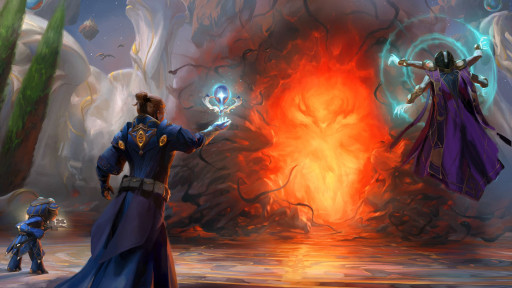
SotO was the first expansion released via ArenaNet’s modern content model, promising shorter and smaller expansions with faster turnarounds and more frequent updates. It is also the most universally criticized of the game’s major expansions, in large part due to the rushed third act of its story and the growing pains of the new content model.
While there are many valid criticisms of SotO, there are just as many that blow its problems out of proportion or lump things it did just fine in with its genuine issues. Is it truly as bad as people say, or is the game’s first mini-expansion overhated?
Review
SotO aims to answer several long-awaited questions with its story—namely, the truth behind the iconic Wizard’s Tower and the whereabouts of Zojja after she disappeared from the story following HoT. The story kicks off with the Commander wandering into a war between the secret society of the Astral Ward and the Kryptis, demons seeking to invade Tyria. The Commander is swiftly recruited into the Ward’s ranks, taking on the title of Wayfinder as they fend off the Kryptis and, later on, assist a friendly Kryptis noble with inciting a civil war and deposing the Midnight King.
That final portion of the summary is where many of SotO’s biggest problems come in. The Kryptis civil war is a plotline that feels incredibly rushed due to how little room it had to breathe; in turn, the preceding storyline with the Wizards feels rushed on some occasions as well, being forced to conclude in two acts to make room for the civil war. It almost feels as though the story would have worked better if it were split into two distinct expansions, with the Kryptis civil war getting a full dedicated story with which to explore its new setting and characters.
When it comes to its maps, SotO only has three, making it the smallest of any expansion. To make up for this, not only does SotO feature five total meta-events (three of which are in the final map, Inner Nayos), but it also introduces Convergences, a new PvE gamemode which functions like an instanced meta-event a la Dragonstorm or Twisted Marionette, pitting players against a pool of five different bosses at the end. Convergences are more organizationally challenging than most open-world content, and even come with Challenge Modes that rack up the difficulty even more for dedicated players.
Overall, SotO’s open-world content is of rather high quality. All of the metas range from serviceable to quite good, and the three maps are very distinct and unique. Amnytas and Inner Nayos do suffer from slight problems in that they each consist entirely of just one aesthetic with little variation, while Skywatch Archipelago and Amnytas share a different issue of being made up of a lot of empty space, but these are relatively small issues, and ones that won’t impact most players. Skywatch Archipelago is also often criticized as being “lazy” due to the fact that its unique concept—it consisting of “what-if” fractals of various locations players have visited before—allowed the developers to reuse old assets. We could write a whole article about why that argument doesn’t hold up, but simply know that if seeing a reused asset causes you any sort of physical or mental pain, Skywatch is not the map for you.
Finally, instanced content is where SotO’s small size becomes most apparent. Compared to EoD’s five strikes or Icebrood Saga’s seven, SotO has only two. The first, Cosmic Observatory, is a completely serviceable but ultimately unimpressive encounter; the second, Temple of Febe, is of much higher quality. Both fights also came with their own Challenge Modes, and while CO’s is somewhat disappointing (though a good entry point for new players to strike CMs, thanks to its relatively low difficulty), ToF has the distinction of being the current hardest encounter in the game—so hard, in fact, that the developers had to make a second, easier version of it, thus birthing the new concept of Legendary Challenge Modes (this is a slightly inaccurate summary of exactly how it happened, but this, too, is something we could write a whole article on).
Similarly to EoD, SotO came with a new fractal as well: Lonely Tower. Unfortunately, this fractal’s reception is as mixed as the expansion as a whole. The normal mode is, though a bit long, quite fun and unique. Where things fall apart is the Challenge Mode. Unlike all other fractal CMs, activating Challenge Mode doesn’t teleport you straight to Lonely Tower’s final boss nor change every encounter; instead, it makes you complete the entire fractal mostly unchanged only to face a buffed boss at the end. Said boss is long, difficult, and in some ways even more class-dependent than Silent Surf before it; the reception is so poor that the majority of CM groups seem to still avoid running it even now, months after its release.
Overall, SotO’s flaws are numerous and fairly obvious to most players. However, it also receives significantly more hate than it really deserves. The final act of the story is obviously rushed, but the early portions and the underlying lore are quite compelling. The maps and metas are of rather high quality. Cosmic Observatory’s only sin is being a tad underwhelming, leaving Lonely Tower CM as the only real stinker among the instanced content. SotO struggles severely with the growing pains of the new content model, which is most evident in its story, but the majority of the actual content that came with it ranges from “fine” to good.
The good:
- Answers many abandoned plot threads from previous stories and introduces a lot of new lore to the game’s world.
- Three unique maps and five new meta-events.
- The introduction of the Wizard’s Vault, rift hunting, and Convergences.
- The Vault effects all players, while rift hunting can be done in many non-SotO maps, thus adding new content all across the game.
- The current hardest encounter in the game, alongside a new encounter concept: Legendary Challenge Modes.
- A new, easier way to obtain the Skyscale mount.
The bad:
- A rushed story that might’ve been better split into two different expansions.
- Most characters receive a lack of focus and depth, and some plot points are skimmed over.
- The first two maps contain a lot of empty space, and the latter two lack a bit in aesthetic variety.
- Some of the metas can be a bit long-winded, particularly the encounters with Knaebalag and Eparch.
- Cosmic Observatory and its CM, while serviceable, are a bit underwhelming.
- Lonely Tower CM is seen as too long, difficult, and frustrating for most players.
Our rating: 6/10.
Janthir Wilds (2024)

Janthir Wilds is the most recent expansion—so recent, in fact, that as of the time of this article’s writing, we’ve only received the first batch of it. The final score here should be taken with a grain of salt, as it’s based on only a fraction of what the expansion will ultimately have to offer. Coming off the tail of SotO’s failures, the team at ArenaNet expressed that they’d learned many valuable lessons for working with the new content model; it’s up to JW to see if it can live up to the team’s potential.
Review
JW’s story—at least what we have of it so far—is incredibly promising. Following the Kryptis invasion that occurred during SotO, the various nations and factions of Tyria decide to form an alliance to handle future threats. The Commander is invited as a member of said alliance and tasked with recruiting an additional faction: the lowland Kodan of Janthir. In the process, the Commander and co. get wrapped up in helping the bearkin fend off a Titan threat.
JW takes things much slower than most other stories in the game, really giving room for its characters and setting to grow. A lot of love is poured into the lowland Kodan, their way of life, and their history. Taking place in Janthir, the story is also rife with interesting lore regarding the White Mantle and the Mursaat. Some might complain that the story takes things too slow—in particular, some of the story instances with the Tyrian Alliance end up being 10+ minutes of nothing but dialogue. That’s fine for those deeply invested in the story and lore, but some players simply want to get to the action, and nobody wants to replay such an instance.
JW’s open world zones are also quite good. Many hail the first zone, Lowland Shore, as the single best map in the entire game. It lacks a meta-event, but the constant stream of standard events and activities, plus the many achievements and side stories, make it an absolute joy to spend time in. Additionally, though it lacks a proper meta-event, the Bog Queen makes for an amazing fight that might as well be a fully-fledged world boss.
JW also proudly reintroduces renown hearts, a feature which has historically received mixed reception from players. The hearts in Janthir are “tiered”; completing them enough times causes small changes in the map and provides additional rewards. Events in the map also provide tokens that can be spent to gain progress on hearts for free, making the process of completing them both much easier and more open-ended.
JW’s second map, Janthir Syntri, does significantly worse at both of these things than the first map. There are fewer unique events that trigger less often, and renown hearts cover smaller areas while fewer events drop renown tokens. To make up for this, the map features a meta-event—a two-pronged world boss against the Titans. The fight itself is good, though it lacks a bit in rewards. Overall, the map is still perfectly serviceable and quite fun to explore; the negative reaction to it is overblown, largely due to the sheer quality of the first map in comparison.
JW currently has no instanced content yet, but it will eventually feature the eighth raid wing—a return to a gamemode that hasn’t received new content in over five years.
The good:
- A slower-paced story with compelling characters, deep lore, and rich history.
- A focus on Tyria’s current politics, including updates on many plot threads that haven’t been touched in years.
- Some of the best story-mode boss encounters in the game’s history.
- New tiered renown hearts that are easier and more open-ended to complete and provide additional rewards for repeat completion.
- Two new maps (so far), one of which is hailed as one of the best ever designed.
- A fun new dual world boss.
The bad:
- Some story instances drag on for a long time with nothing but dialogue, and may be disinteresting to those not interested in the world or story (or who are doing repeat playthroughs).
- The rewards for tiered renown hearts and the new meta are somewhat lacking.
- Janthir Syntri, while still serviceable, is a significant step down in quality from Lowland Shore in many aspects.
Yet to be seen:
- Two additional maps!
- The eight raid wing!
- New convergences!
Our rating: 8/10, pending future updates.
Conclusion
Guild Wars 2 has a long and storied history, and while it's had its share of failures and mix-ups, its quality has been surprisingly consistent throughout. The developers have made it clear they intend to continue working on Guild Wars 2 for a long time, so we’ll just have to wait and see what they cook up in future expansions.
Our final ratings for each expansion:
- Heart of Thorns: 8.5
- Path of Fire: 7
- End of Dragons: 7.5
- Secrets of the Obscure: 6
- Janthir Wilds: 8*

